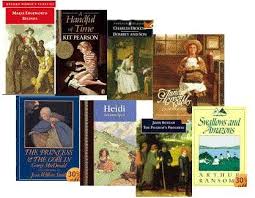From
the Imprimus newsletter of Hillsdale College:
Meghan Cox Gurdon, the Children's Book Reviewer for The Wall Street Journal writes:
ON JUNE 4, 2011, the number one trending topic on Twitter was the
Anthony Weiner scandal. I happen to remember that, because the number
two topic on Twitter that day—almost as frenzied, though a lot less
humorous—had to do with an outrageous, intolerable attack on Young Adult
literature . . . by me. Entitled “Darkness Too Visible,” my article
discussed the increasingly dark current that runs through books
classified as YA, for Young Adult—books aimed at readers between 12 and
18 years of age—a subset that has, in the four decades since Young Adult
became a distinct category in fiction, become increasingly lurid,
grotesque, profane, sexual, and ugly.
Books show us the world, and in that sense, too many books for
adolescents act like funhouse mirrors, reflecting hideously distorted
portrayals of life. Those of us who have grown up understand that the
teen years can be fraught and turbulent—and for some kids, very
unhappy—but at the same time we know that in the arc of human life,
these years are brief. Today, too many novels for teenagers are long on
the turbulence and short on a sense of perspective...
“Beauty is vanishing from our world because we live as if it does not
matter.” That’s Roger Scruton again. But he doesn’t want us to despair.
He also writes:
It is one mark of rational beings that they do not live only—or even
at all—in the present. They have the freedom to despise the world that
surrounds them and live another way. The art, literature, and music of
our civilization remind them of this, and also point to the path that
lies always before them: the path out of desecration towards the sacred
and the sacrificial.
Read this wonderful article here.

 “Given the contemporary reality of what I have called in my writings ‘Global Political Awakening,’
a policy of force based primarily on Western and in some cases former
colonial powers does not seem to me a very promising avenue to an
eventual solution to the regional problem,” said Brzezinski, referring to the situation in Syria.
“Given the contemporary reality of what I have called in my writings ‘Global Political Awakening,’
a policy of force based primarily on Western and in some cases former
colonial powers does not seem to me a very promising avenue to an
eventual solution to the regional problem,” said Brzezinski, referring to the situation in Syria.
 In an inside glimpse of how truly controlled the media really is, there is now literally zero mention of the admitted plan to launch a chemical attack within Syria via the Syrian rebels and blame it on Assad. Now sure, that’s amazing enough that no one is talking about this, but what’s more disturbing is that the
In an inside glimpse of how truly controlled the media really is, there is now literally zero mention of the admitted plan to launch a chemical attack within Syria via the Syrian rebels and blame it on Assad. Now sure, that’s amazing enough that no one is talking about this, but what’s more disturbing is that the 
